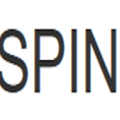For spin systems, such as the $q$-colorings and independent-set models, approximating the partition function in the so-called non-uniqueness region, where the model exhibits long-range correlations, is typically computationally hard for bounded-degree graphs. We present new algorithmic results for approximating the partition function and sampling from the Gibbs distribution for spin systems in the non-uniqueness region on random regular bipartite graphs. We give an $\mathsf{FPRAS}$ for counting $q$-colorings for even $q=O\big(\tfrac{\Delta}{\log{\Delta}}\big)$ on almost every $\Delta$-regular bipartite graph. This is within a factor $O(\log{\Delta})$ of the sampling algorithm for general graphs in the uniqueness region and improves significantly upon the previous best bound of $q=O\big(\tfrac{\sqrt{\Delta}}{(\log\Delta)^2}\big)$ by Jenssen, Keevash, and Perkins (SODA'19). Analogously, for the hard-core model on independent sets weighted by $\lambda>0$, we present an $\mathsf{FPRAS}$ for estimating the partition function when $\lambda=\Omega\big(\tfrac{\log{\Delta}}{\Delta}\big)$, which improves upon previous results by an $\Omega(\log \Delta)$ factor. Our results for the colorings and hard-core models follow from a general result that applies to arbitrary spin systems. Our main contribution is to show how to elevate probabilistic/analytic bounds on the marginal probabilities for the typical structure of phases on random bipartite regular graphs into efficient algorithms, using the polymer method. We further show evidence that our result for colorings is within a constant factor of best possible using current polymer-method approaches.
翻译:对于旋转系统, 比如 $qqetrocling 和 独立的正态模型, 我们给出了 $\ mathsf{ FPRAS} 美元来计算所谓的非异常区域( 模型显示远程关联) 的分区功能, 通常对于闭合度图形来说, 通常都是很难计算。 我们展示了一个新的算法结果, 用于匹配分区功能和 Gibbs 分布, 用于在非不统一区域随机的经常双方图中用于旋转系统的旋转系统。 我们给出了 $= mathsffsf{ formas} Frimals 的计算 $qt=Oqt_ dial- limalslations $qtal- $gral- flormacal- macreal_ macreal_ macreal_ mailal- maxal- max max max max max max max max max max max max max max max max max max max max max max max max max max max maxxxxxxxxxxxxxxxxxxxxxxxxxxxxxxxxxxxxxxxxxxxxxxxxxxxxxxxxxxxxxxxxxxxxxxxxxxxxxxxxxxxxxxxxxxxxxxxxxxxxxxxxxxxxxxxxxxxxxxxxxxxxxxxxxxxxxxxxxxxxxxxxxxxxxxxxxxxxxxxxxxxxxxxxxxxxxxxxxxxxxxxxxxxxxxxxxxxxxxxxxxxxxxxxxxxxxxxxxxxx




